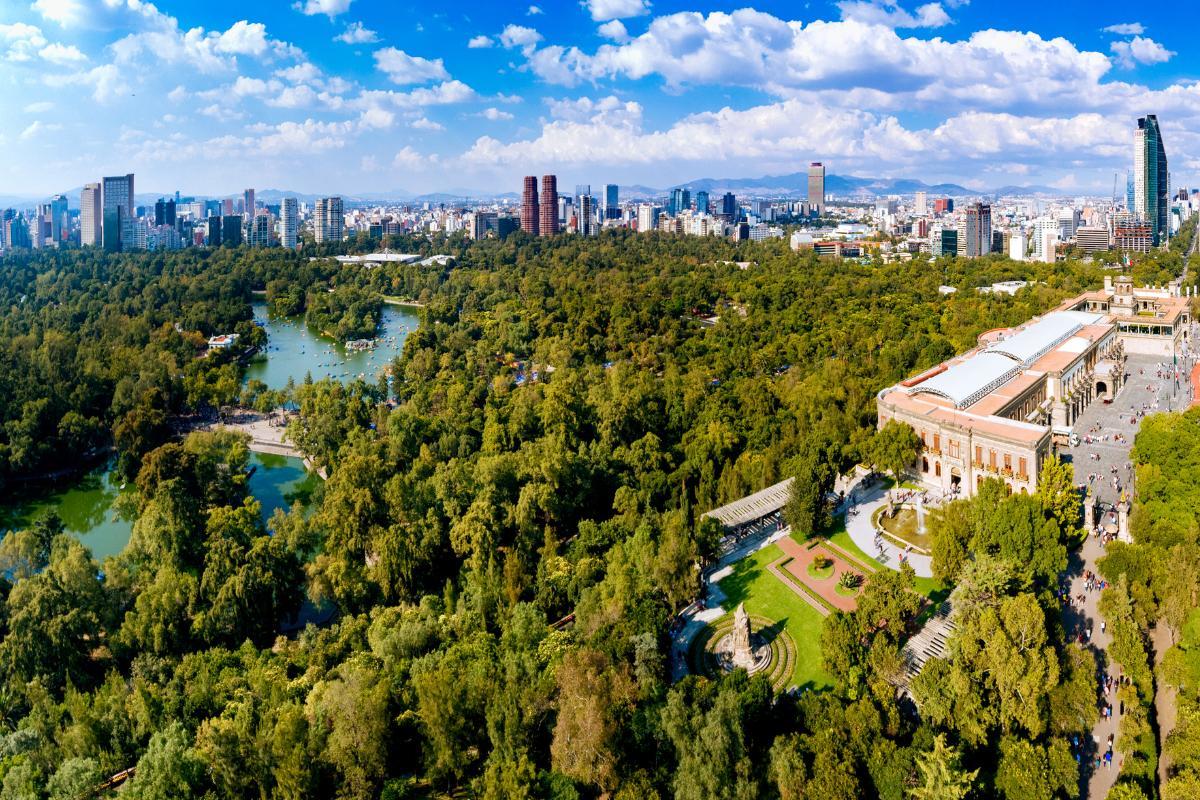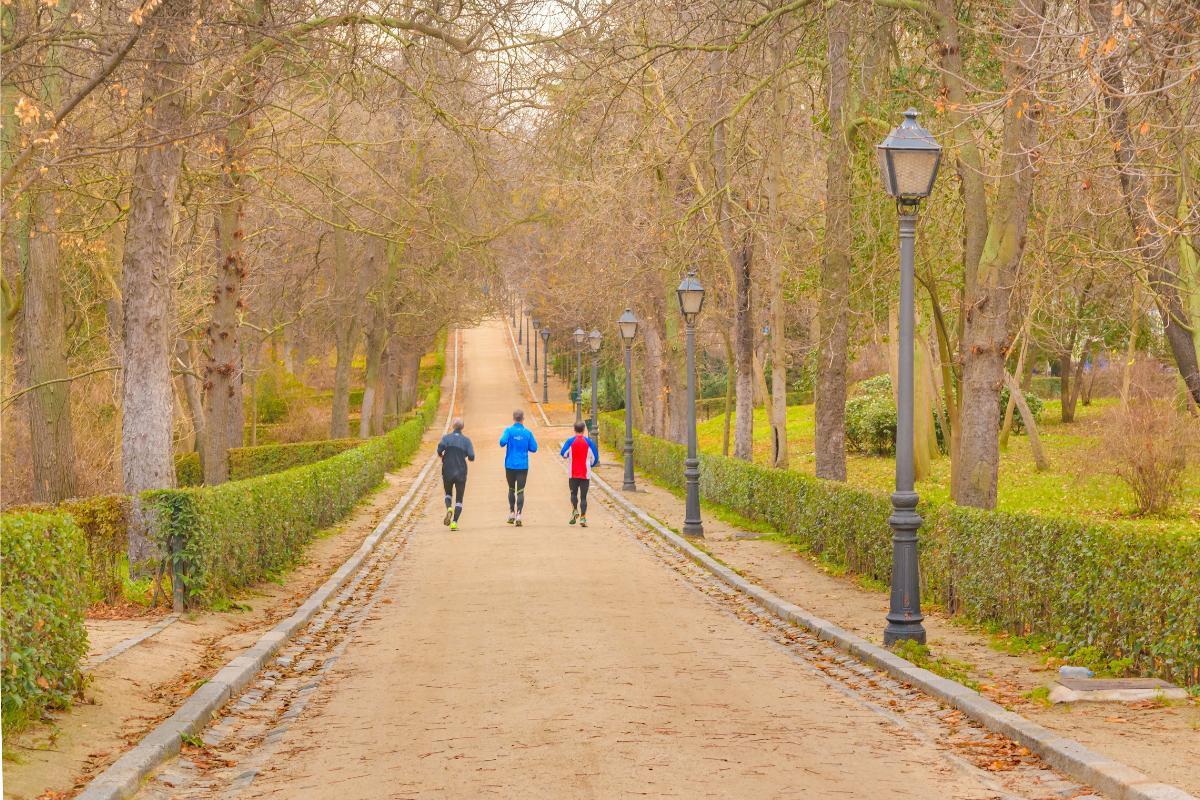Benefits of Urban Forestry - Environmental, Social, and Economic


Urban forests, also known as city forests or urban green spaces, represent the vital green lungs within urban environments. Comprising trees, vegetation, and greenery strategically placed within cities, these spaces play a crucial role in enhancing the urban landscape, human health, and overall ecological balance. The significance of urban forests lies in their multifaceted contributions, ranging from environmental conservation to social and economic benefits, making them pivotal components of modern cities' sustainability.
This article aims to provide a comprehensive understanding of urban forests, emphasizing their far-reaching impacts on human health, the environment, and the socio-economic fabric of urban life.
What are urban forests?
Urban forests serve as essential green infrastructure, encompassing a variety of trees, vegetation, and green spaces deliberately integrated into urban settings.
These areas are purposefully designed and strategically positioned within cities to counterbalance the dominance of concrete and infrastructure, providing an essential natural environment amid urban developments.
These spaces aren't just about trees; they consist of diverse plant species, shrubs, green corridors, and sometimes water bodies, offering a diverse ecosystem within the cityscape. They aren't confined to vast woodlands; instead, they can vary from small parks and tree-lined streets to larger forested areas within metropolitan regions.
The significance of urban forests goes far beyond providing aesthetic appeal. They act as the green lungs of cities, playing a pivotal role in maintaining the ecological balance and improving overall quality of life. By offering a reprieve from the urban landscape, they contribute to mitigating environmental pollution, maintaining biodiversity, and regulating microclimates within cities.
Strategically placed within city boundaries, urban forests serve as essential components for sustainable city development. Their integration into the urban landscape helps in mitigating the adverse effects of urbanization. They not only provide spaces for relaxation, recreation, and leisure but also act as crucial connectors between nature and urban communities.

Benefits of urban forests for human health
Urban forests serve as essential contributors to human well-being within city environments. Their presence significantly impacts the physical and mental health of city residents, fostering a healthier and more balanced lifestyle.
Mental health
The serene and natural ambiance of urban forests has a profound positive effect on mental health. Studies reveal that spending time in green spaces aids in stress reduction, alleviates symptoms of anxiety and depression, and enhances overall psychological well-being.
The calming effect of nature plays a vital role in improving mood and fostering a sense of tranquility amid the hustle and bustle of city life.
Physical health
Engaging in outdoor activities within urban forests, such as walking, jogging, or recreational activities, contributes to improved physical health. Regular exercise in these green spaces has been linked to reduced risks of obesity, cardiovascular diseases, and other chronic illnesses.
The availability of green spaces encourages physical activity, thereby promoting a healthier lifestyle for urban dwellers.
Respiratory health and air quality
The presence of trees and vegetation in urban forests significantly improves air quality. By absorbing pollutants and releasing oxygen, these green areas play a pivotal role in reducing respiratory problems among city residents.
Cleaner air due to the presence of greenery results in decreased instances of respiratory illnesses, thereby contributing to overall public health improvement.
Urban forests act as natural air filters, absorbing pollutants such as carbon dioxide, sulfur dioxide, and particulate matter. Through this process, they contribute to the reduction of air pollution levels within cities.
From urban oases to technological marvels, explore the captivating world of artificial forests and uncover their role in shaping the future of urban landscapes in this other article.

Economic benefits of urban forests
Urban forests, often underestimated in their economic significance, contribute immensely to the financial well-being of cities. Their tangible and intangible benefits translate into significant monetary value and economic contributions.
Quantifying the value of urban forests involves assessing the direct and indirect economic benefits they provide.
These green spaces contribute to property values, positively impacting real estate values and encouraging investment in areas adjacent to green zones. Furthermore, they enhance the visual appeal of neighborhoods, attracting residents and businesses, which in turn can boost local economies.
Beyond the immediate property values, urban forests contribute to job creation and income generation. They serve as attractions for tourism and recreation, creating employment opportunities in various sectors, such as tourism, hospitality, and the service industry. Additionally, the aesthetics of green spaces provide settings for events, further enhancing the economic vibrancy of urban areas.
Urban forests offer a spectrum of ecosystem services that lead to substantial cost savings for cities. The natural processes within these green areas, such as air purification, water filtration, and temperature regulation, result in reduced energy consumption and maintenance costs for municipalities. These savings are accrued through minimized air conditioning needs, stormwater management, and reduced health care costs due to improved public health.
Measuring the economic impact of urban forests involves evaluating the cost-effectiveness and benefits of their presence. Economic assessments take into account avoided costs related to air and water pollution, as well as the value of services rendered by the urban forest, such as carbon sequestration, stormwater management, and reduction in heat island effects. These evaluations highlight the significant role these spaces play in alleviating economic burdens on cities.
The return on investment in urban forests is evident in the form of a healthier and more appealing urban environment. The social, environmental, and economic benefits derived from these green spaces yield immeasurable returns by creating a more sustainable and vibrant city ecosystem.
Explore the interplay between urban forestry and the heat urban island effect in this other article.
Social Benefits of Urban Forests
Urban forests serve as vital hubs for social interaction within cities. These green spaces provide gathering spots for various communal activities, encouraging casual meetups and community events. Their inclusive nature helps bridge gaps between diverse city populations, nurturing a sense of unity and shared experiences.
Urban forests have a notably positive impact on social dynamics within cities. Residents utilize these green areas for leisure and recreational activities, promoting a more active and healthier lifestyle. Moreover, they serve as meeting places, fostering bonds and shared activities that strengthen the social fabric of urban communities.
Urban forests act as open-air learning environments, offering hands-on educational experiences. Programs, guided nature walks, and workshops held within these spaces provide valuable insights into the natural world. These educational initiatives cater to all ages, nurturing a deeper understanding and appreciation for the environment.
By hosting educational activities and interactive experiences, urban forests play a key role in raising environmental awareness among city residents. These spaces inspire a greater consciousness of environmental issues, instilling a sense of responsibility toward nature's conservation and preservation.
Urban forests have a notably positive impact on social dynamics within cities. Residents utilize these green areas for leisure and recreational activities, promoting a more active and healthier lifestyle. Moreover, they serve as meeting places, fostering bonds and shared activities that strengthen the social fabric of urban communities.
The collective influence of these social benefits substantially enhances urban living standards. Access to green spaces within the city encourages physical activity, reduces stress, and uplifts mental well-being. This, in turn, contributes to a higher quality of life for city dwellers, making urban living more fulfilling and enjoyable.

The role of urban forests in climate change
Urban forests play a vital role in combatting and adapting to the challenges of climate change within cities. Their presence significantly aids in lessening the impacts of changing climates in urban areas.
Regulating urban heat
The cover of trees in urban forests performs a crucial function in managing temperatures. Trees offer shade and release moisture through their leaves, helping to lower temperatures in cities. This cooling effect alleviates the heat often trapped in urban settings.
Absorbing carbon and emissions reduction
Urban forests act as essential stores of carbon, absorbing carbon dioxide through their growth. This absorption aids in reducing the presence of greenhouse gases in the atmosphere, contributing significantly to the global efforts to combat climate change.
Examples of urban parks
Urban forests around the world represent successful and diverse initiatives, each showcasing unique features and designs that contribute to the urban landscape in distinct ways. Here are a few notable examples:
Millennium Park, Chicago, USA
Chicago's Millennium Park is an exemplary model of urban forest integrated within a bustling urban center. This innovative park features an extensive tree canopy, including unique art installations and lush greenery. It offers recreational spaces, serene gardens, and cultural attractions, creating a vibrant community hub. Covers approximately 24.5 acres (9.9 hectares).
The Royal National City Park, Stockholm, Sweden
This large urban forest is woven into the city fabric, stretching across Stockholm. Known for its varied landscapes, the park integrates woodlands, meadows, and water bodies. It serves as a natural retreat within the city, promoting outdoor activities and ecological preservation. Spans roughly 6.3 square miles (16.3 square kilometers).
Singapore's Gardens by the Bay, Singapore
Gardens by the Bay represents an awe-inspiring example of futuristic urban forest design. This innovative space integrates cutting-edge technology with natural habitats, boasting unique Supertree Grove, biodomes, and suspended walkways. It stands as a testament to Singapore's commitment to sustainability and environmental awareness. Occupies approximately 250 acres (101 hectares).
Bois de Boulogne, Paris, France
Located on the western edge of Paris, Bois de Boulogne is a sprawling urban forest offering a peaceful retreat from the bustling city. With a vast expanse of trees, lakes, and walking trails, this green space allows Parisians to enjoy nature, engage in outdoor activities, and escape the urban rush. Spreads across about 2,090 acres (845 hectares).
Tokyo's Yoyogi Park, Japan
Yoyogi Park is an oasis in the heart of Tokyo, known for its diverse landscapes, spacious lawns, and lush woodlands. It serves as a vibrant gathering place for cultural events, recreational activities, and nature appreciation, providing a refreshing escape within the city. Encompasses around 134 acres (54 hectares).
These examples illustrate the variety and richness of urban forest designs and initiatives worldwide, demonstrating how they can seamlessly blend into urban environments, offering diverse recreational, cultural, and ecological spaces within bustling cityscapes.
Discover the albedo effect and its role in urban forestry strategies.
If you want to read similar articles to Benefits of Urban Forestry - Environmental, Social, and Economic, we recommend you visit our Architecture and urban planning category.








